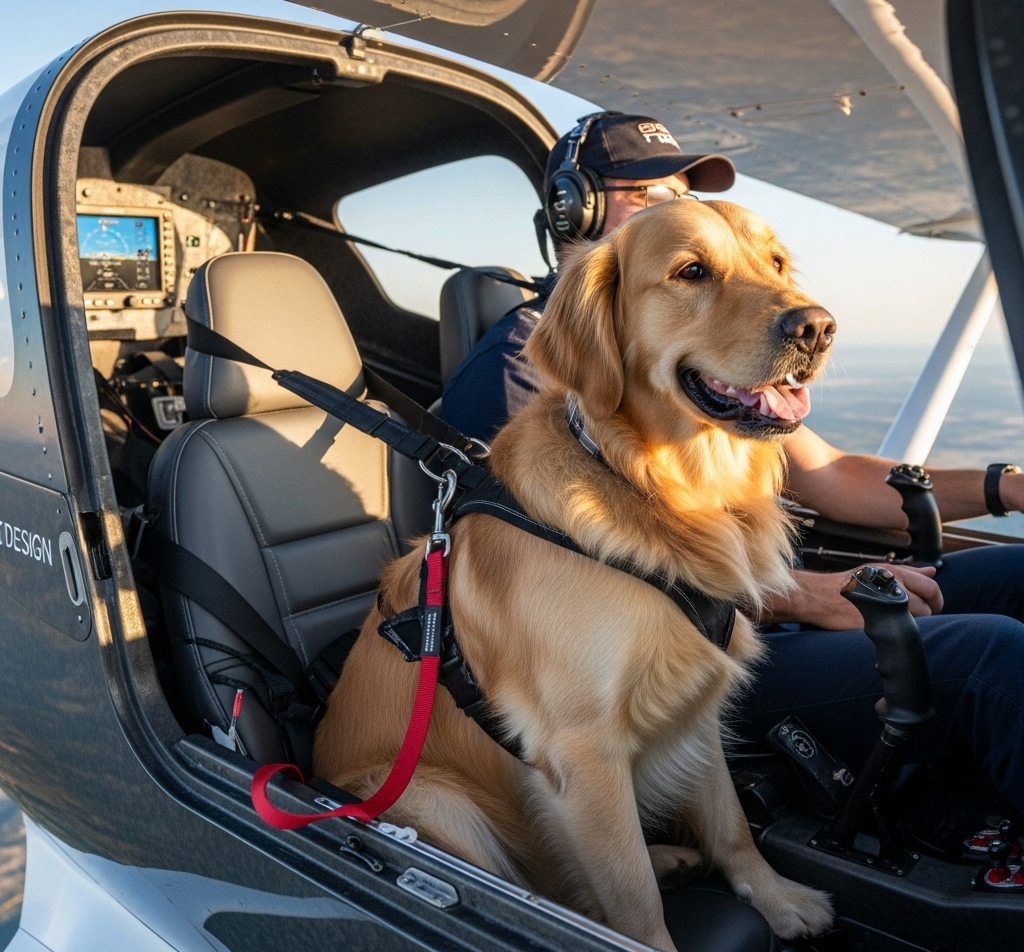The early afternoon sun beat down on Monticello Regional Airport in Iowa, July 1st, 2017. A light sport aircraft, a sleek, carbon-fiber Flight Design CTSW, N62JN, was on final approach to runway 27. Inside, a 90-year-old commercial pilot, with thousands of hours of flight time, was preparing for a routine full-stop landing. Beside him, in the right passenger seat, sat his faithful companion: a large, 70-pound dog.
The pilot had departed Monticello an hour earlier for a local personal flight, a common occurrence for him and his canine co-pilot. Weather conditions were ideal: clear skies, excellent visibility, and a gentle breeze from the west. Another pilot, practicing touch-and-go landings, was in the traffic pattern, exchanging brief radio calls with N62JN. The pilot of the CTSW had initially aborted an earlier approach, perhaps to allow for spacing, before re-entering the pattern for a full stop.
As N62JN crossed the runway 27 threshold, its airspeed was a calculated 48 knots, the engine idling at just 2,000 RPM. A perfectly normal approach for the Flight Design CTSW, an aircraft known for its docile handling at low speeds, with a flaps-extended stall speed of 39 knots. But then, just three seconds past the threshold, something shifted.
The aircraft, instead of continuing its straight descent onto the runway, began a subtle, then distinct, right turn, veering away from the runway centerline. Simultaneously, the engine, which moments before had been quiet, suddenly spools up. Not to a gentle climb power, but to takeoff power, rapidly reaching over 4,300 RPM.
The turn tightens. The aircraft’s airspeed, instead of increasing with the surge of power, continues to bleed off. The right wing dips lower, and lower. The calculated airspeed drops to 44 knots, perilously close to the stall speed, which would have been significantly higher in a banked turn.
The aircraft is now descending, right wing down, into the cornfield adjacent to the runway. The pilot, a seasoned aviator, is fighting for control. But the angle of attack is increasing rapidly, exceeding the wing’s ability to generate lift. The aircraft is no longer flying. It is falling.
The Flight Design CTSW, with its high wing and lightweight carbon fiber construction, begins to lose all aerodynamic composure. The right wing drops further, the nose pitches down sharply. The aircraft is in an unrecoverable aerodynamic stall, at an altitude far too low for any recovery.
The engine, still screaming at takeoff power, provides no escape. The cornstalks rush up, a blur of green. There is the sickening sound of impact, the tearing of metal, the crunch of composite materials.
The aircraft slammed into the cornfield about 250 feet north of the runway centerline. The impact was violent, right-wing-down and nose-down, consistent with an uncontrolled descent. The cockpit structure was heavily fragmented, the right wing completely torn away. Fuel leaked from the left wing root. The scene was one of total devastation.
First responders arrived quickly. Amidst the wreckage, a grim discovery: the pilot was fatally injured. But then, a flicker of hope. Running from the cornfield, disoriented but alive, was the pilot’s dog, who had been on board. The dog, though sustaining minor injuries, was caught and later treated by a local veterinarian.
The National Transportation Safety Board launched its meticulous investigation. Investigators examined the scattered debris path, the impact crater, and every component of the aircraft. The engine, despite the catastrophic impact, showed no signs of pre-impact mechanical malfunction. It had been operating at takeoff power, its propeller blades exhibiting damage consistent with rotation at impact. The electronic flap control selector was found in the fully extended position, 40 degrees. The throttle was full forward.
A critical piece of evidence was found in the wreckage: a homemade, removable plywood device installed on the right-side passenger floorboard. The pilot’s son confirmed his father had fabricated it to prevent a passenger, or more specifically, his large dog, from inadvertently contacting the rudder pedals during flight. While this device was not approved for installation, investigators found no evidence it had interfered with the pilot’s rudder pedals or the control sticks.
However, the presence of a 70-pound dog in the small, two-seat cockpit, coupled with the aircraft’s sudden right turn and uncommanded pitch-down, painted a clearer picture. The NTSB’s analysis of the ground track and engine data revealed the critical sequence of events: the aircraft, already at a low airspeed for landing, made an abrupt right turn away from the runway. Simultaneously, the engine surged to takeoff power, yet the airspeed continued to drop, indicating an uncontrolled aerodynamic event.
The NTSB determined the probable cause of this tragic accident was the pilot’s decision to fly with his large dog in the two-seat, light sport airplane. This decision led to the dog’s likely contact with the flight controls during landing, which resulted in the pilot’s loss of airplane control and a subsequent aerodynamic stall when the airplane exceeded its critical angle of attack at a dangerously low altitude.
This accident serves as a stark reminder of the unforgiving nature of low-altitude flight and the critical importance of maintaining complete, unobstructed control of an aircraft at all times. Even the most experienced pilots, with thousands of hours, can be caught in an impossible situation when unexpected factors interfere with the delicate balance of flight. The unseen passenger, in this case, became an unwitting participant in a fatal chain of events.

